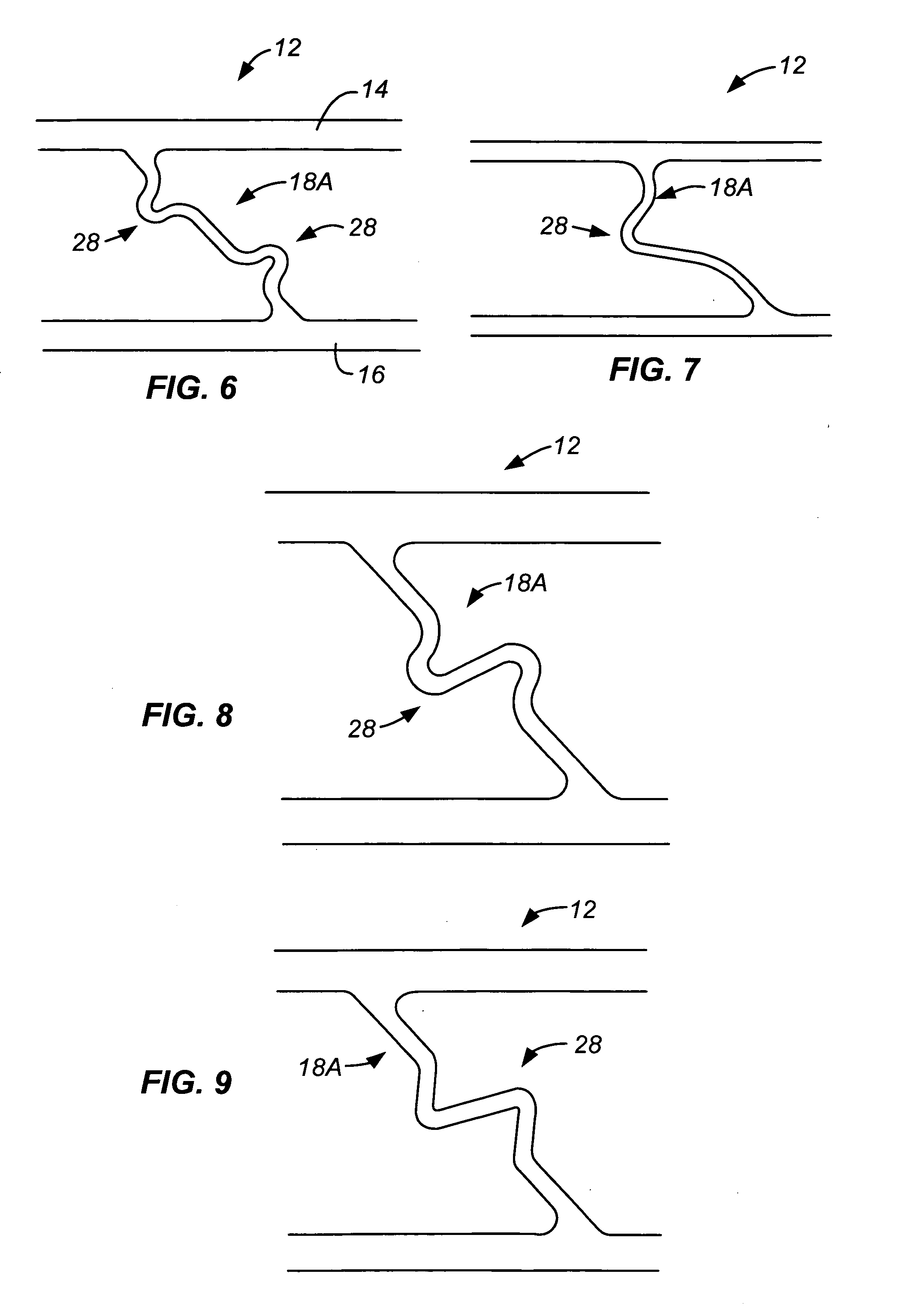Coiled ladder stent
a ladder stent and stent technology, applied in the field of ladder stent rungs, can solve the problems of ladder stent failure, rails or rungs, repeated flexion, compression, extension or torsion of the stent, and the failure of the conventional ladder stent under the severe mechanical manipulation environment, so as to reduce or minimize the negative consequences of the rung failure, reduce the strength, and reduce the effect of strength
- Summary
- Abstract
- Description
- Claims
- Application Information
AI Technical Summary
Benefits of technology
Problems solved by technology
Method used
Image
Examples
Embodiment Construction
[0025]FIG. 1 illustrates a conventional ladder stent blank 10 from which a conventional ladder stent 12, shown in FIG. 2, is formed. Each of ladder stent hank 10 and ladder stent 12 has rails 14, 16 and rungs 18 connecting the rails. Also, rails 14, 16 join together at their distal ends 20, 22. Stent 12 is chemically photoetched from a flat sheet of material (dimensions appropriate for desired final stent size), heat shape set on a mandrel to a helical / coiled form and then surface treated to final product dimension and form.
[0026] Rungs 18 are preferably oriented at an acute angle to rails 14 so that when ladder stent 12 is wound down onto a delivery catheter, or other delivery device, rungs 18 are oriented generally parallel to the delivery device axis. This provides a smoother appearance and thus aids passage through the vasculature and to the target site. This feature is further discussed in U.S. Pat. No. 6,660,032.
[0027]FIGS. 3-12 are enlarged views of sections of several embo...
PUM
 Login to View More
Login to View More Abstract
Description
Claims
Application Information
 Login to View More
Login to View More - R&D
- Intellectual Property
- Life Sciences
- Materials
- Tech Scout
- Unparalleled Data Quality
- Higher Quality Content
- 60% Fewer Hallucinations
Browse by: Latest US Patents, China's latest patents, Technical Efficacy Thesaurus, Application Domain, Technology Topic, Popular Technical Reports.
© 2025 PatSnap. All rights reserved.Legal|Privacy policy|Modern Slavery Act Transparency Statement|Sitemap|About US| Contact US: help@patsnap.com



